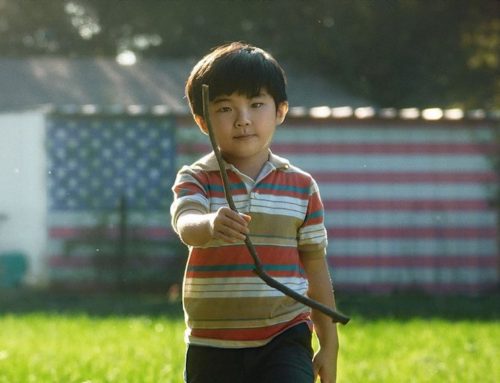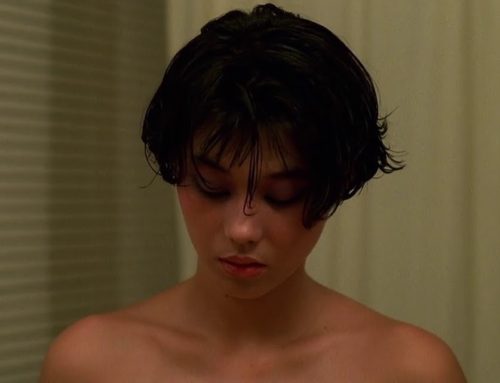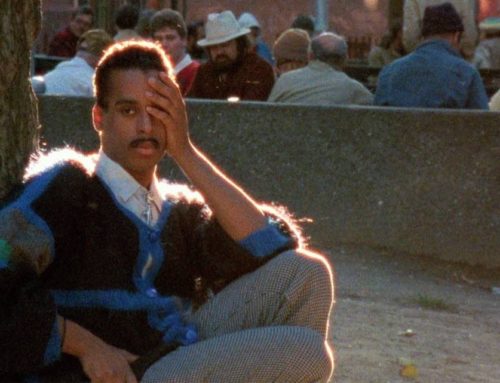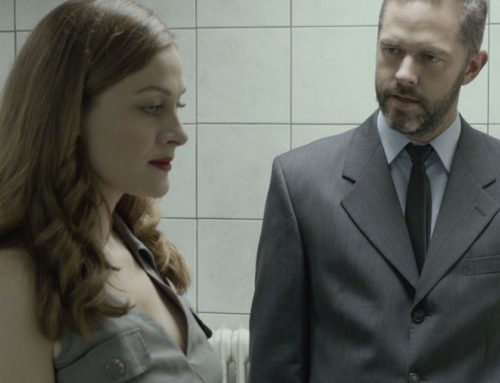Recently I asked a young friend of mine what new films she had been watching during the strange and alienating Plague Year 2020. In a way I was both surprised and not surprised at all with her answer. “I haven’t seen many new movies. Little of what’s done today is of any interest to me. I’ve been watching old black and white movies from the Golden Age of Hollywood,” she said. When pressed further for the reasons of this choice I detected a familiar escapist desire for beauty, order and certainty, of the kinds one sees so often in abundance in old movies, and which lack so much in our lives. The reason I enquired into her cinematic preferences was that for quite a while I myself had been either rewatching or seeing for the first time movies produced in the last century, not few from before the fifties. Like my friend, I had found many of the films and television series produced today disappointing, and realised that much of the early twentieth century cinema seems fresher and more daring in the dark currents of its subtext than most of the crude mass products of today. In many cases, old films can be most rewarding and entertaining, and, for those who work in cinema or aspire to do so, they may be surprisingly instructive and inspiring.
A great option of a filmmaker to revisit or explore for the first time is Alfred Hitchcock. Born in 1899 in England and died in 1980 in California, with career spanning across six decades, he directed more than fifty films, many of which have become so iconic that few people who have the most basic knowledge of cinema haven’t heard his name. Called by many the Master of Suspense, his films, most notably Psycho (1960) and The Birds (1963), have become intrinsic parts of popular culture and have been parodied many times in comedies — a sure sign of success. It is impossible to overstate the magnitude of his influence on cinema. His huge and varied body of work developed and refined much of the cinematic vocabulary we use and see today, and affected the work of other big screen luminaries such as Martin Scorsese, François Truffaut, David Fincher and Wes Anderson, to name but a few.
To many, writing a piece about Hitchcock might seem pointless, since everybody knows that his films are worth watching and so many brilliant — and some not so brilliant — books have been written about him already. Yet, some years ago when I was at drama school, I encountered many fellow students, some of whom were aspiring filmmakers, who had never in their life seen a single Hitchcock film. This sounds just as absurd as a person who wants to become a playwright but has never seen or read a Shakespeare play. Yet there are many such individuals who, for one reason or another, have been robbed of a great source of inspiration, instruction, beauty and entertainment. However, if even the future directors and screenwriters neglect Hitchcock’s work, how can one expect the opposite from the general public? Moreover, the absence of Hitchcock movies on television is glaring and I have noticed that even members of older generations have seen too few of them, if any. This article, therefore, is about both the things Hitchcock’s work can bring to first-time watchers and the valuable lessons he could teach potential filmmakers.
This is not to say, however, that everything Hitchcock created was perfection. Although many of his films are indeed masterpieces, there are those that disappoint. Some of his earlier pictures, which he shot in England, bear the awkward marks of a young filmmaker trying to master his craft, whilst his last films can seem somewhat laboured and unremarkable in comparison to those from the peak of his career. Also, he was not particularly good at directing period pieces; films like the clunky, albeit exciting, Jamaica Inn (1939) and the too stagey and melodramatic Under Capricorn (1949) can attest to that. Moreover, in some of his films, the leading man and lady would fall in love so easily and suddenly at the beginning of the movie that it becomes glaringly and irritatingly obvious it was done simply in order to fuel the plot. Perhaps the best example for this is Spellbound (1945), starring Ingrid Bergman and Gregory Peck who fall in love with each other with such ridiculous speed and in a way that is so out of character that it ruins the otherwise quite remarkable movie.
Furthermore, there are some unpalatable aspects of Hitchcock’s character and life that might be barring some people from approaching his work. For instance, he has often been described as an autocratic director who treated his actors like cattle. That accusation, however, was dismissed by the actor Hume Cronyn Jr and many great performers like Grace Kelly, Joan Fontaine, Ingrid Bergman, Cary Grant, James Steward and Farley Granger worked with him multiple times. Had Hitchcock treated them badly, multiple collaborations would have been quite unlikely. On the contrary, the many arresting and moving performances in his films prove that he knew exactly what to do in order to stimulate and help his actors, as Walter Slezak, who played the subtle Nazi captain in Lifeboat (1944), asserted.
Another accusation that is often laid at Hitchcock’s feet is that of misogyny; that he hated women and treated actresses as dolls that he would dress and abuse in his films. It is true that many of his female characters go through horrible and humiliating experiences, many being brutally murdered, and that his leading ladies were often so perfectly dressed that they looked less like human beings and more like moving objets d’art. This, however, is countered powerfully by the remarkable strength of character, independence, intelligence, resourcefulness and courage of the Hitchcock heroines, many of whom are much more interesting than his male personages. Amongst these strong women are the unrelenting socialite Iris in The Lady Vanishes (1938), the unnamed heroine of Rebecca (1940) who is determined to achieve happiness, the young and protective of her family Charlotte in Shadow of a Doubt (1943), Alicia who becomes a spy to help in the fight against the Nazis in Notorious (1946), the resolute and courageous Lisa in Rear Window (1954) and the selfless Eve in North by Northwest (1959). One struggles to see how exactly Hitchcock’s work can be labelled as sexist, since he often gave the strongest and most exciting parts in his films to women.
That said, there is one significant and very dark spot on Hitchcock’s record when it comes to his work with women: the Tippy Hedren case. In 1961, whilst he and the screenwriter Evan Hunter were developing the script for The Birds, Hitchcock and his wife saw an advert on television with a very beautiful and charismatic blonde girl. This turned out to be Tippi Hedren who, at that time, worked as a model. The then elderly film director decided to cast her in the leading role of his next picture, even though this was going to be her very first proper role on screen. Hedren, a classic beauty who became the iconic Hitchcock blonde girl, signed a contract with him and, despite the expectations of many and the quite challenging filming process, she gave an amazing performance as the frivolous socialite Melanie who both matures and finds a new mother figure after her clash with the mysterious and destructive forces of nature. After The Birds, Hitchcock did another film with Hedren, Marnie (1964), which can still be regarded as one of the most disturbing movies ever made. In it, Hedren gives an exceptionally rich and moving representation of a traumatised young woman who, with the help of her sometimes-abusive husband, faces the ghosts of her past and recovers.
To many it seemed that the relationship between Hitchcock and Hedren was very productive and that perhaps he had finally found his perfect muse whom he would go on to cast in many other films. The reality, however, was very different. Hitchcock became obsessed with Hedren. He was trying to control every aspect of her life, isolated her from other cast and crew members, hired people to follow her and made unwelcome sexual advances towards her. The situation for Hedren became intolerable during the shooting of Marnie and she told him that she did not want to work with him anymore after the completion of the picture. With striking cruelty, he told the young woman that, if she abandoned him, he would destroy her acting career. Nevertheless, she did leave the challenging situation and, because of her contract, Hitchcock did prevent her for a time from getting new roles.
One does not have to live in the era of the MeToo movement to see that Hitchcock’s behaviour was reprehensible and unacceptable. He should not have ruined his professional relationship with Hedren over an unwholesome obsession with her for the obvious reason that nobody should have to endure uncomfortable, even traumatic, sexual attention which he or she has not welcomed. But it was also a lamentable and stupid waste because, from artistic point of view, he and Hedren could have made many more brilliant films together. This dark side of Hitchcock, however, ought not to impede us from watching and enjoying his many excellent movies. The great Italian painter Caravaggio was a murderer, yet we still rightfully treasure and appreciate his tenebrous canvases. Hedren herself said in an interview with Larry King in 2016 that she regarded Hitchcock as an awesome director and that she had “the capability of separating the artist from the man”. If she is able to compartmentalise in this way, others ought to do the same and both explore and celebrate Hitchcock’s work.
I envy those who are yet to see his iconic movies, for they are about to discover what a Schatzkammer of pure cinema his oeuvre is. As mentioned above, many famous actors have given some of their best performances in his projects, so if somebody wants to see excellent acting from the stars of the previous century, Hitchcock is the filmmaker to go to. Another advantage of his films is their often impressive and very detailed production design. Nobody does glamour and luxury as Hitchcock did them, as in, for instance, Rebecca and Notorious. He is also famous for exciting set pieces that take place in famous locales, like the chase in the British Museum in Blackmail (1929), the fights on Mount Rushmore in North by Northwest, and the attempt to prevent an assassination in the Royal Albert Hall in The Man Who Knew Too Much (1956). Moreover, Hitchcock earned himself the title of Master of Suspense for a reason. Almost every film of his has such high stakes for its characters, who have to escape a highly dangerous situation, that the audience is kept on the edge of their seats or, in our era, their sofas for the whole duration of the picture. Some of his more parodied movies, like Psycho, might be somewhat spoiled for the contemporary audience, who are likely to have seen a version of it on The Simpsons or Scream Queens, yet, thank goodness, most of the others have been neglected by popular culture and would still manage to excite, move and surprise the novel viewer.
Another very important aspect of Hitchcock’s films is sex. Most of his work was produced during a period when the Motion Picture Production Code still had influence. Also known as the Hays Code, it was a list of guidelines for the censoring of what was then regarded as the indecent and dangerous depictions of certain groups, themes and acts. It forbade most nudity, as well as the presentation of intimate relationships out of wedlock in a positive light, and excluded all “sex perversions”, homosexuality being regarded as such. Albeit stultifying, these prudish requirements forced many filmmakers to find their way around them in creative and often better than expected ways. Today we are rather desensitised by all the flesh and carnal acts we are bombarded with from films and television, and seeing a scene from an old movie that manages to be maddeningly erotic without the usage of lurid language and the shedding of clothing can be more exciting even than the latest full-frontal of Michael Fassbender. One of the most unashamedly erotic Hitchcock films is To Catch a Thief (1955). Set in the French Riviera, in it Cary Grand plays an ex-burglar who used to steal jewellery. Copy-cat crimes begin to plague famous hotels and, helped by a fabulous and opinionated heiress played by Grace Kelly, he tries to clear his name. Although never explicitly addressed, the sexual tension between the two of them reaches almost unbearable levels. At one point early in the film they go on a picnic and, offering him some chicken, she asks “Do you want a leg or a breast?” Later when alone in a darkened room, the perfectly poised Grace Kelly tempts Grand with her mellow voice to… touch the diamonds around her bare neck, whilst a purely orgasmic firework display blasts above the sea in the background.
Hitchcock suggested that extramarital sex was acceptable in certain circumstances. He does this in, for example, Strangers on a Train and Notorious. In the former, the wife of the hero cheats on him with multiple men so he finds solace in a respectable young woman whom he would marry the moment he gets a divorce. In the latter, the sexually profligate behaviour of Bergman’s character is forgiven when she accepts and carries out a very dangerous mission of getting information from a group of Nazis. Hitchcock even dared to touch upon the subject of homosexuality, most notably in Rope (1948), where a young gay couple decide to commit the perfect murder, and in Rebecca, with the lesbian obsession of Mrs Danvers with her dead mistress. It is true that these characters do not fare well in the end, that way going along with the accepted idea at the time that their nature was corrupt. Nevertheless, they were important milestones in representation of same-sex attraction in American cinema and paved the way for the more daring and accepting films to come.
All the beauty, suspense and undercurrents of sexual desire and destructive darkness in his movies would not have been possible had Hitchcock not been such a meticulous and disciplined filmmaker. He relied strongly on the pre-production process and was famous for regarding the film as finished in his head with the completion of the script, which made the actual shooting and editing of the material a bore for him. Hitchcock had his projects storyboarded in detail and then tried to follow them closely, claiming that he never strayed away from his initial concept, that way painting himself as a cinematic genius. That, of course, was not true. Everybody who has tried to shoot a film knows that there are many unpredictable obstacles and challenges in the production process that one has to adapt to or even embrace. Following a storyboard fanatically is impossible, unless it is for animation. What Hitchcock managed to achieve was an extraordinarily fruitful balance between detailed preparation in pre-production and measured flexibility in production. Such discipline and occasional allowance for chance are vital lessons for young filmmakers to learn.
Another one is the importance of the plot devise he often used and helped to refine, known as the MacGuffin. In Hitchcock’s words, the MacGuffin is “the thing that the characters on the screen worry about but the audience don’t care” about. Put in another way, it is the reason the story is happening; it is the goal that the heroes want to achieve, the object they want to find or the information they have to acquire, around the pursuance of which all the character development and emotional engagement can happen. For instance, the MacGuffin in Psycho is the stollen money which makes the heroine run away and then compels others to look for her. The one from Dial M for Murder (1954) is the key that is used for entering into the flat to commit a crime. A very famous MacGuffin is the mysterious word “Rosebud” from Orson Welles’s Citizen Kane (1941) which motivates a journalist to investigate the life of the titular character. Another is the Heart of the Ocean necklace from James Cameron’s Titanic (1997), the hunger for which made treasure hunters explore the wreck and the lives of the people who travelled on it.
There is some confusion about the exact nature of the MacGuffin since, in recent decades, there are many screenwriters and directors — George Lucas being one of them — who disagree with Hitchcock when it comes to the claim that the audience ought not to care about it. On the contrary, some believe that the people watching the film must be thoroughly invested in the MacGuffin, as, for instance, those who watch The Lord of The Rings (2001-2003) are completely engrossed in the fate of the One Ring. In both cases, however, it is important to remember that the MacGuffin is a very useful plot devise that gives the opportunity for the unfolding of the story we want to tell and the armature around which we can sculpt it.
As mentioned before, suspense is one of the most important aspects of Hitchcock’s movies. It can keep the audience utterly engaged in the story and terrify them more than any amount of blood and gore could. How is it created? Suspense is created when the audience is given the information that the characters they see on the screen are in a certain danger without the characters themselves knowing it. The famous example Hitchcock gave is of several men sitting around a table, talking about baseball. The boring conversation continues for five minutes and then a bomb goes off and the men are destroyed. This, Hitchcock says, is not suspense, but shock, and it lasts for only few seconds and has little impact. The scene would be suspenseful if, at its beginning, the audience is shown that somebody has put a bomb under the table that will explode in five minutes. The result of this is five minutes of tension and absolute anxiety that the characters, whose conversation no longer seems boring at all, would be murdered. For instance, in Dial M for Murder, we know that there is a killer hiding behind a curtain, and all the time we spent watching Grace Kelly sleeping, waking up and going to pick up the phone we shake with worry.
Perhaps Hitchcock’s most famous and suspenseful moment is in The Birds. In a scene at about the middle of the film the main heroine Melanie goes to a school to pick up the little sister of the man she is attracted to. The girl is still in class with a dozen other children, who are singing an irritating and repetitive song. Melanie decides to wait for their lesson to end and sits on a bench outside with her back to a playground with a big jungle gym. As she smokes, we see that a raven perches on the jungle gym. Melanie is oblivious to its presence. We, however, immediately sense danger. This happens because by that time in the film we know that the birds are very dangerous: we have seen a seagull attack Melanie and a flock of birds had murdered a farmer in the most gruesome way. So even the sight of one bird in the background makes us think that similar end is looming over both Melanie and the children. It worsens when we see that several more raves arrive and perch behind the young woman. Finally, after what seems to us an excruciatingly long cigarette, Melanie turns to the playground and we see together with her the full extent of the danger: the whole playground is covered in robust raves with pointy beaks and sharp claws, ready for attack. Every wrong move on Melanie’s part might result in her and the children’s horrible deaths.
Hitchcock, however, believed that the bomb under the table — or the birds, or the murderer behind the curtain, or whatever the danger is — should never go off and kill the characters, because the audience needs the release from the tension. Therefore, at the very last moment somebody would notice the explosive device and either manage to deactivate it or throw it out of the window where it would detonate without harming anybody. He is right that the audience hopes for a release but, if all filmmakers followed that rule, the audience would learn the formula and it would no longer be effective. They would know that there is no real danger, because this is a movie and the bomb will be discovered on time. Moreover, Hitchcock himself broke his own rule in his most famous film, Psycho. In its emblematic shower scene, after the audience feels and sees the danger, the heroine is murdered. We saw a very effective breaking of the rule some years ago in the tenth episode of the sixth season of Game of Thrones. In its beginning there was a very tense scene that lasted almost ten minutes, at the end of which Cersei Lannister blew up a whole temple full of people and with several main characters. So, suspense can be used both ways. The important thing to remember is that it all depends on giving certain information to the audience and denying that information to the characters for a time.
But even more important for Hitchcock than suspense was the creating of what he liked to call “pure cinema”. Achieving that makes one a true filmmaker. Pure cinema is conveying information about the story to the audience through images, movement of the camera and editing, and not through the lines the characters say. It is the famous and important cliché “show, don’t tell”. Unlike theatre, where people often cannot see the action on the stage properly and therefore the story has to be communicated heavily through dialogue, cinema is an intensely visual and dynamic medium. Talking on screen is, of course, useful and can be very expressive, yet relying on it too much is lazy and wastes all the other potent tools of the form. Perhaps one of the reasons for which Hitchcock was so good at this was that he made his first ten pictures in the era of silent cinema. In it, the necessary dialogue was shown to the audience to read on the so-called intertitles, inserted between the moving silent images. The mark of the good filmmaker of the time was managing to tell the story of the film with fewest such intertitles and mainly through images. Moreover, early in his career Hitchcock was influenced by filmmakers like Fritz Lang and F. W. Murnau, who were two of the main figures of the German Expressionist movement, the striking visuals of which were, true to their name, very expressive. Hitchcock’s best film from his silent period is The Lodger: A Story of the London Fog (1927), which uses few intertitles and manages to convey strong mood of unease and menace through its intense tenebrous compositions.
This determination to tell the story through images continued in his “talkies”, in which dialogue is often of secondary importance. An extreme example of this is Rope. It unfolds in real time in the apartment of a couple of young men who, at the very beginning of the film, kill a friend of theirs and hide his body in a chest in the living room, just before the family of the victim and other friends arrive for a party. Almost all the dialogue in it is overshadowed by the importance of the different reactions of the two murderers to the many instances when their crime might be discovered by their guests. Another example is the scene from Dial M for Murder, in which the husband who wants to see his cheating wife killed talks on the phone to her in an affectionate manner, whilst the murderer he has just hired gets to know their flat before he commits the crime in it. Furthermore, during dialogue scenes, Hitchcock would often show a close up of the hands of his characters, in order to convey their psychological state, as he does in Rope and in many other films. He would also show a close up of something that would otherwise seem irrelevant, in order to say that it is or will be of importance. Such moments are, respectively, the cup of poisoned coffee in Notorious and the engraved lighter in Strangers on a Train.
Hitchcock manages to impart even more information in scenes with no dialogue whatsoever. He often does this when he introduces his characters. For instance, for the first couple of minutes of Strangers on a Train we see nothing but the feet of the two main characters as they make their way into the train station. One of them wears striped trousers and flamboyant shoes, which immediately tell us that he is daring and out of the ordinary. The other has unremarkable grey trousers and normal dark shoes, betraying his ordinariness and restraint. In the first scene of Shadow of a Doubt we see Charlie lying by himself on the bed of a dirty, untidy room, smoking and looking pensively at the ceiling. Banknotes are scattered around his cluttered bedside table and on the floor around it. It is clear that there is something suspicious about him and, sure enough, we soon discover that he is being followed by two men. Later on, when he visits the respectable family of his sister and presents himself as a successful businessman, we know that he is lying.
One of the opening shots of Rear Window is famous for all that it manages to tell us about the hero of the film without a single word. We see the sweaty Jeff napping in a wheelchair, his left leg in a cast. The debris of a broken camera lie on a nearby table. Exciting black and white photographs of car races, explosions and war zones hang above it. A portrait of a beautiful young woman in negative is framed nearby and beside it are stacked several magazines, whose cover girl is this same fabulous woman. This one shot has told us that Jeff is a photographer who reports on dangerous events, but has gone through an accident and is now chained to the wheelchair to recover, having to endure heat and boredom, and probably thinking about a sophisticated love interest.
In his pursuit of pure cinema, Hitchcock went even further. In the scenes of the conversations of his characters every shot, every change in the angle of the camera and its every move mean something. They intensify the drama and impact the audience’s perception of the scene in a delicate, almost imperceptible way. They tell them the subtext of what is happening. Take a scene from Strangers on a Train as an example. In the film Guy meets the bizarre Bruno on a train journey. It transpires that both have problems with particular people: Guy with his wife who would not divorce him; Bruno with his father who would not give him more money. Bruno has the crazy idea of a perfect murder. He would kill Guy’s wife and Guy would kill his father; this would make connecting the murder to its beneficiary impossible. Guy dismisses this insane idea but, later on, Bruno strangles his wife. The scene in which he tells Guy the news and demands the death of his father unfolds in the following way:
Late at night, establishing shots of a street. Guy is about to enter his home, but hears Bruno beckoning him from the shadows behind an iron gate. This immediately sets the uneasy and crooked tone of the scene. After some hesitation, Guy goes to Bruno. A shot to both of them in the same frame looking at each other, with Bruno behind the bars of the gate and Guy on the side walk. Guy is still in the normal world, whilst Bruno is in the shadowy demimonde of crime. Bruno presents Guy with a pair of glasses. Cut to Guy, who in that moment realises there is something wrong. Cut to a close up of the broken glasses — those of Guy’s wife. She is dead. Cut to Bruno who tells him about the murder and then to Guy’s reaction to the information, proven by the glasses. Cut to Bruno, who moves closer to Guy and the camera moves with him almost imperceptibly, underlying the invasion of Guy’s personal space and life. After a short exchange the horrified Guy starts for his home to call the police, but Bruno stops him. Cut to Guy, but this time seen through the other side of the gate, as if now he is the one behind bars. More shots of Bruno behind the gate. He is prisoner of his own madness and Guy is prisoner of Bruno’s crime. Bruno threatens Guy. Cut to a police car arriving in front of Guy’s home. Cut to Guy hiding behind the gate together with Bruno, watching the cop ringing the doorbell. Now they are in it together, two men imprisoned by the actions of one and the fear of the other. This is what full mastery of the subtleties of the cinematic vocabulary looks like.
Watching the movies of Alfred Hitchcock is usually a thrilling experience that entertains and moves us. Looking deeply into his works and trying to discover how and why they were made that particular way, can teach aspiring filmmakers the delicate but crucial techniques of the art and craft of cinema that can influence the minds and hearts of the audience. There are wonderful directors and writers who work today and who produce remarkable films. Yet, unsurprisingly, their work is not the majority. I hope that some people would put aside at least some of the ready-made, formalistic, predictable detritus that clutters the streaming services and watch some of Hitchcock’s iconic movies. After all, as in every artistic medium, filmmakers ought to learn from the masters. And Hitchcock was not just the Master of Suspense. He was the Master of Pure Cinema.
‘The Master of Pure Cinema: Going Back to the Films of Alfred Hitchcock’ is an article written by Kyril Buhowski. You can follow Kyril Buhowski on Instagram.





